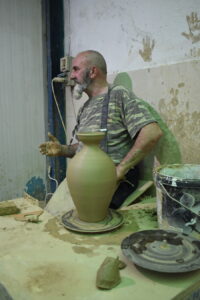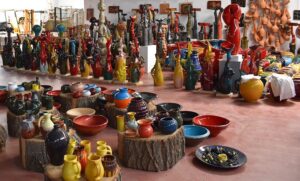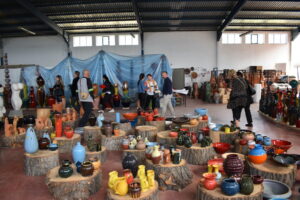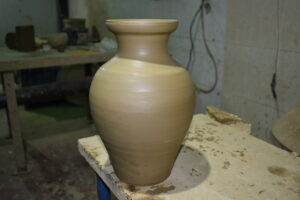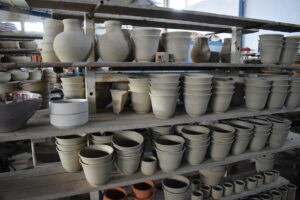The potter’s work begins with the collection of material, the raw material (clay mud), which is dug up from the fields of Korça, Devolli, and Kolonjë. These materials come in different colors, and their mixing brings up the required texture.
After the mound of clay is collected and mixed, it is stored in a large multi-quintal vat and used as needed.
To start making an element, a prepared clay slurry is taken and centered on the rotating plate of the wheel, where the dough created is kneaded by hand while every so often wetted, “caressing” it to give the desired shape.
The pottery comes in different products, such as bardhakë (clay pots with spout), vases of different sizes and shapes, plates, jars, wine glasses, shtamba (pitchers), pans, çerep (earthenware for baking bread and pies), pots, etc. Once the wheel-turning process is over, the element obtained is cut along with a cutting rod to separate it from the wheel.
After the product is taken off the wheel, it is left in drying conditions for 3 weeks at the earliest, and then it is baked, at a temperature of 9000 C. Baking continues for several hours depending on the type of element. The baking furnace is artisanal.
Once the baking has finished, the product undergoes glazing and enameling, which are the final steps of making the required element.




